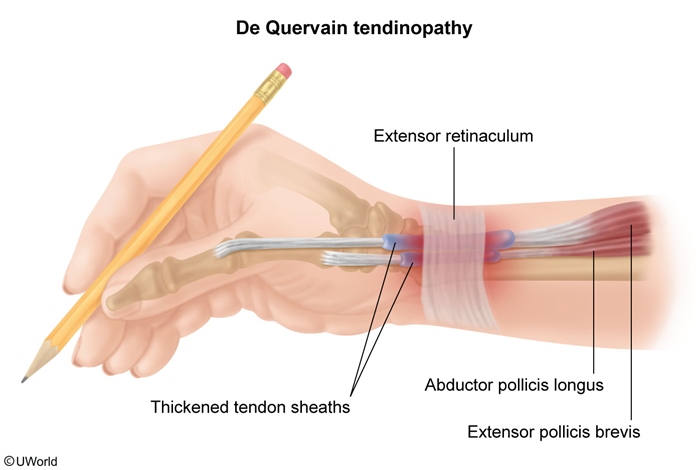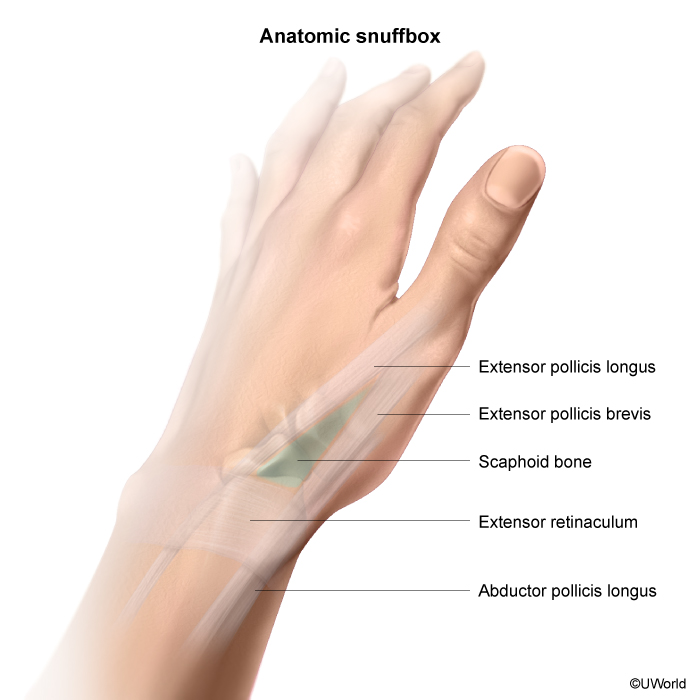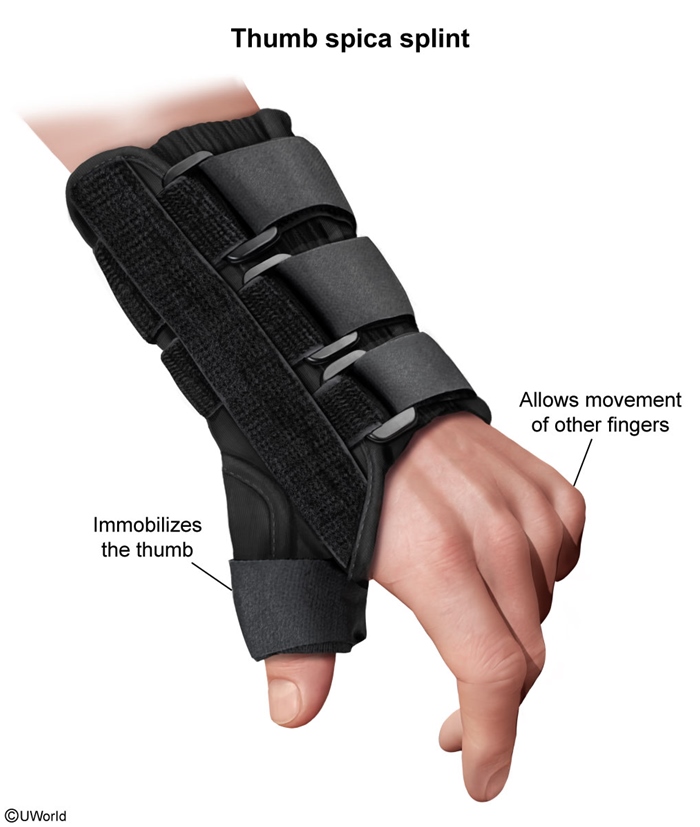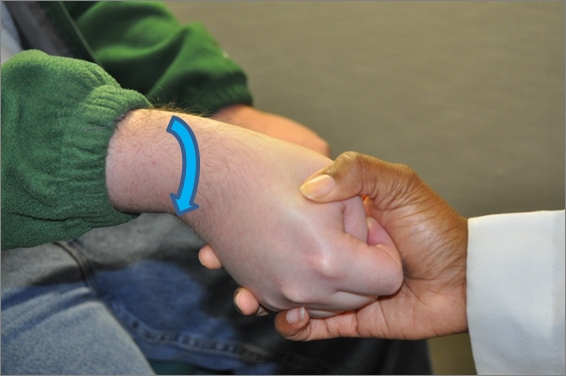De Quervain Tendinopathy
Article Sections
Introduction
De Quervain tendinopathy is an overuse syndrome affecting the abductor pollicis longus (APL) and extensor pollicis brevis (EPB) tendons in the first extensor compartment of the wrist. It typically presents with pain and tenderness along the radial (lateral) aspect of the wrist that worsens with thumb or wrist movement.
Pathogenesis
De Quervain tendinopathy is a stenosing tenosynovitis involving the APL and EPB tendons, typically where they pass beneath the extensor retinaculum within the first dorsal compartment of the wrist (Figure 1).
The condition is thought to result from repetitive or excessive use of the wrist and thumb (eg, frequent lifting of infants). This mechanical overuse places stress on the APL and EPB tendons, leading to thickening of the synovial tendon sheath and fibrosis of the surrounding fibro-osseous tunnel. As the tunnel narrows, the tendons become entrapped, increasing friction during movement (eg, thumb extension and abduction).
Continue Learning with UWorld
Get the full De Quervain Tendinopathy article plus rich visuals, real-world cases, and in-depth insights from medical experts, all available through the UWorld Medical Library.
Figures



Images
